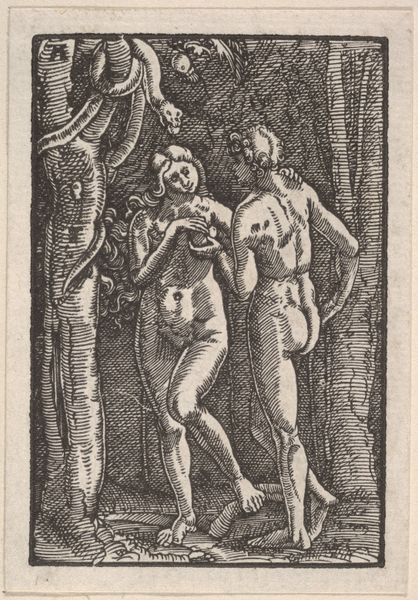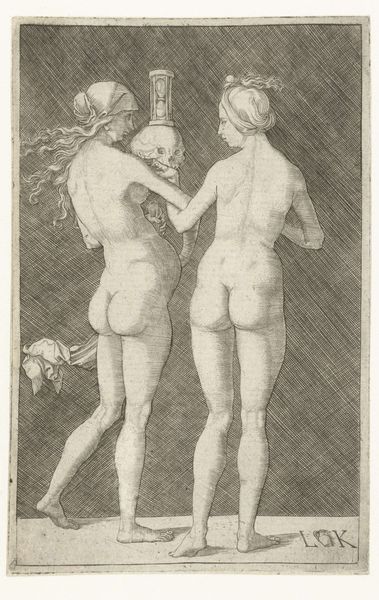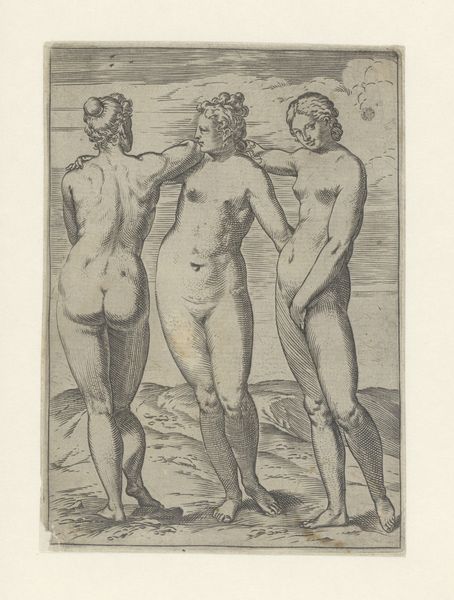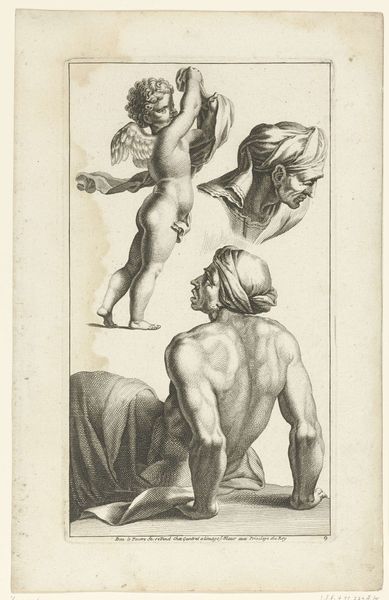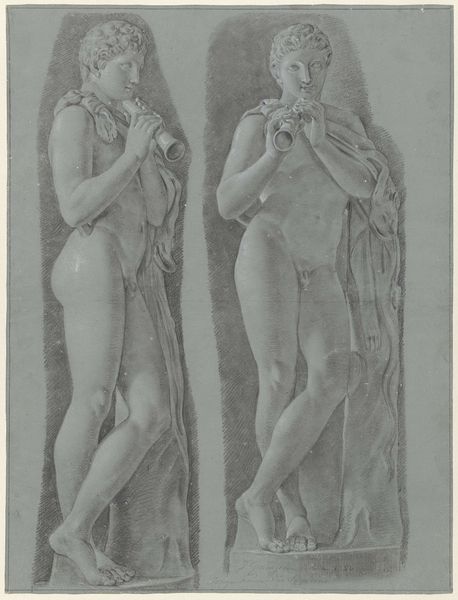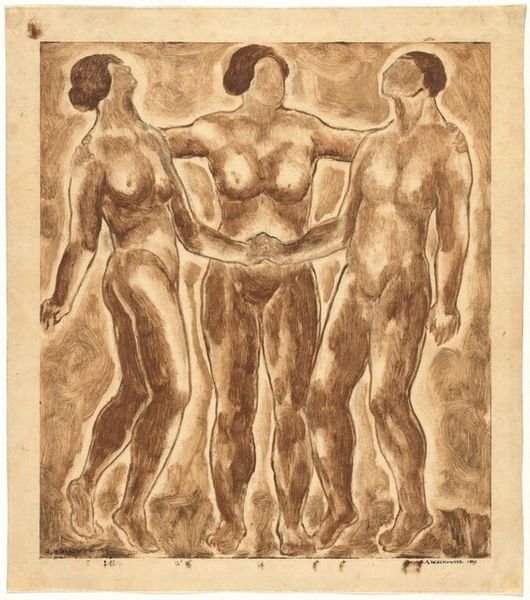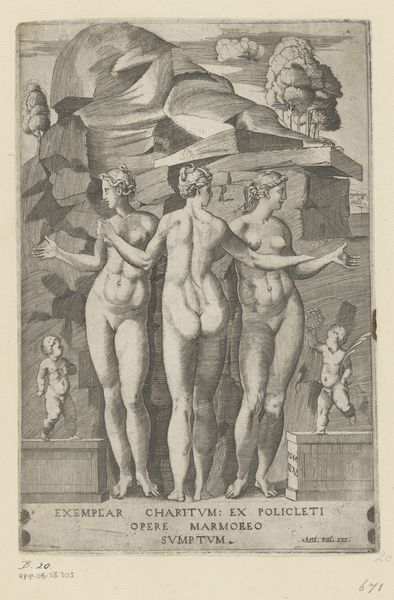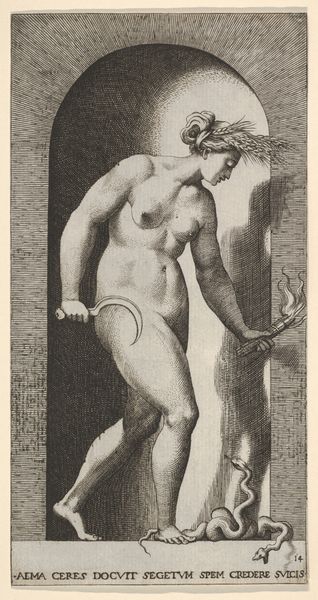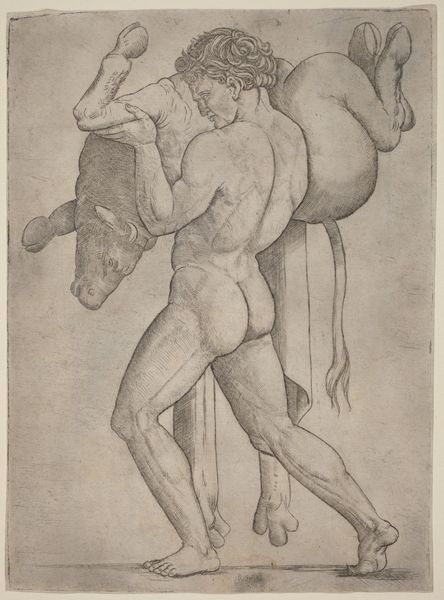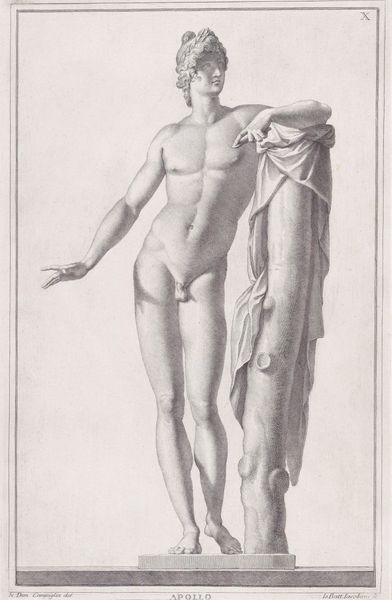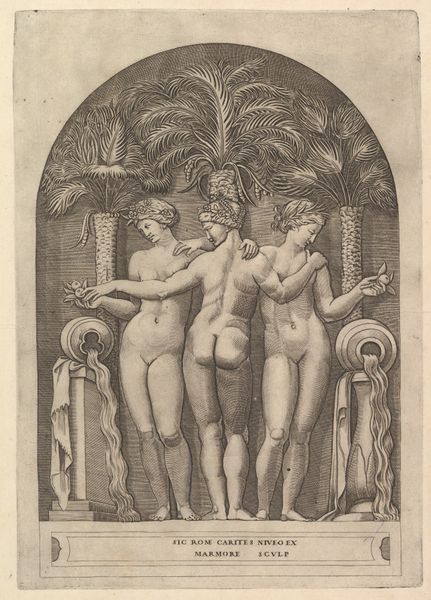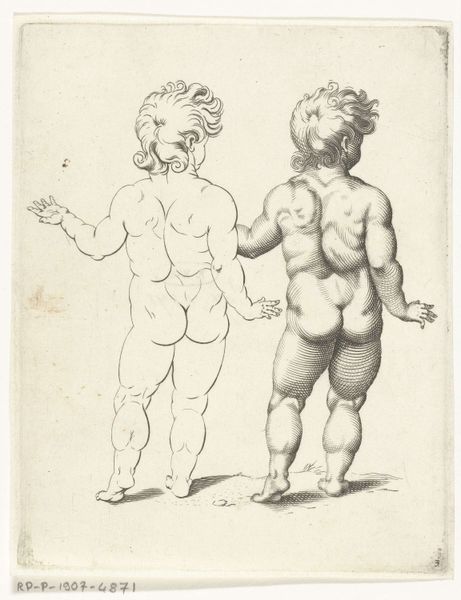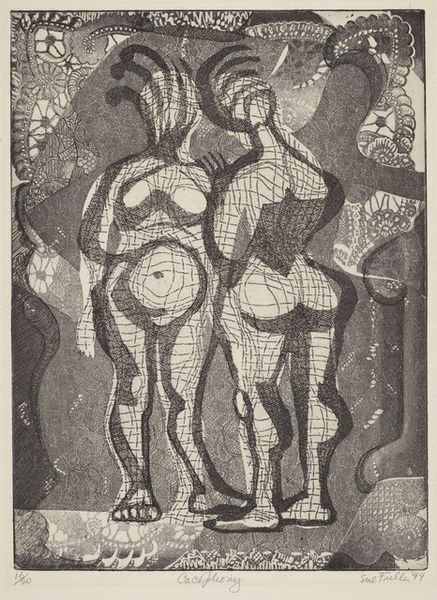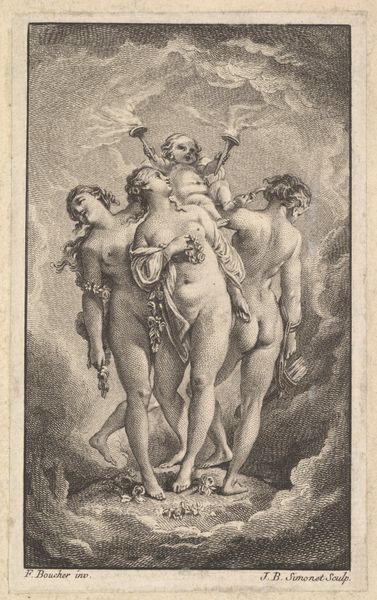
The Three Graces (recto); Four putti engaging in various activities (verso) 1580s
0:00
0:00
drawing, print, engraving
#
drawing
# print
#
figuration
#
11_renaissance
#
group-portraits
#
line
#
northern-renaissance
#
nude
#
engraving
Dimensions: Sheet: 8 1/16 × 5 15/16 in. (20.4 × 15.1 cm)
Copyright: Public Domain
Christoph Murer created this pen and black ink drawing, “The Three Graces,” around the turn of the 17th century. It draws on classical mythology to embody ideals of beauty, grace, and social harmony. The Three Graces were often commissioned for elite patrons. Murer was working in Switzerland, a region undergoing significant religious and political change during the Reformation. The classical subject matter, rendered with an eye to idealized human form, provided a visual language that transcended local conflicts. By invoking this classical ideal, Murer and his patrons could position themselves within a broader European tradition of learning and refinement. To understand this drawing better, we might look at emblem books and humanist writings that circulated in Europe at the time. These sources would reveal the complex social meanings that were attached to classical figures and their use in courtly culture. The history of art is inseparable from the history of its institutions and social uses.
Comments
No comments
Be the first to comment and join the conversation on the ultimate creative platform.
